With multi-industry experience, we help MNC leaders and teams leverage their Strengths to enhance collaboration, build high-performing teams, and drive a culture of growth.



Strengths-Driven Leadership & Development
With multi-industry experience, we help progressive MNC leaders and teams leverage their Strengths to enhance collaboration, build high-performing teams, and drive a culture of growth.
We work with clients from:


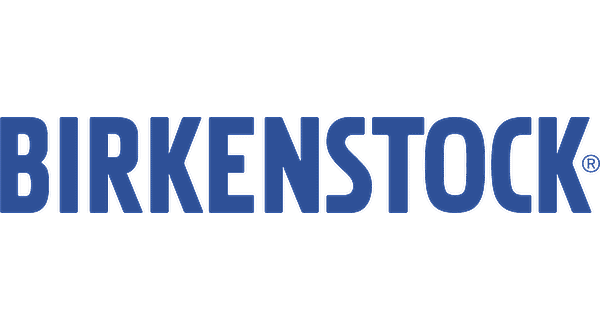



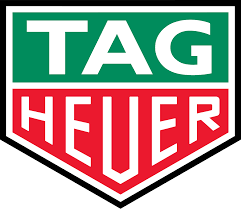



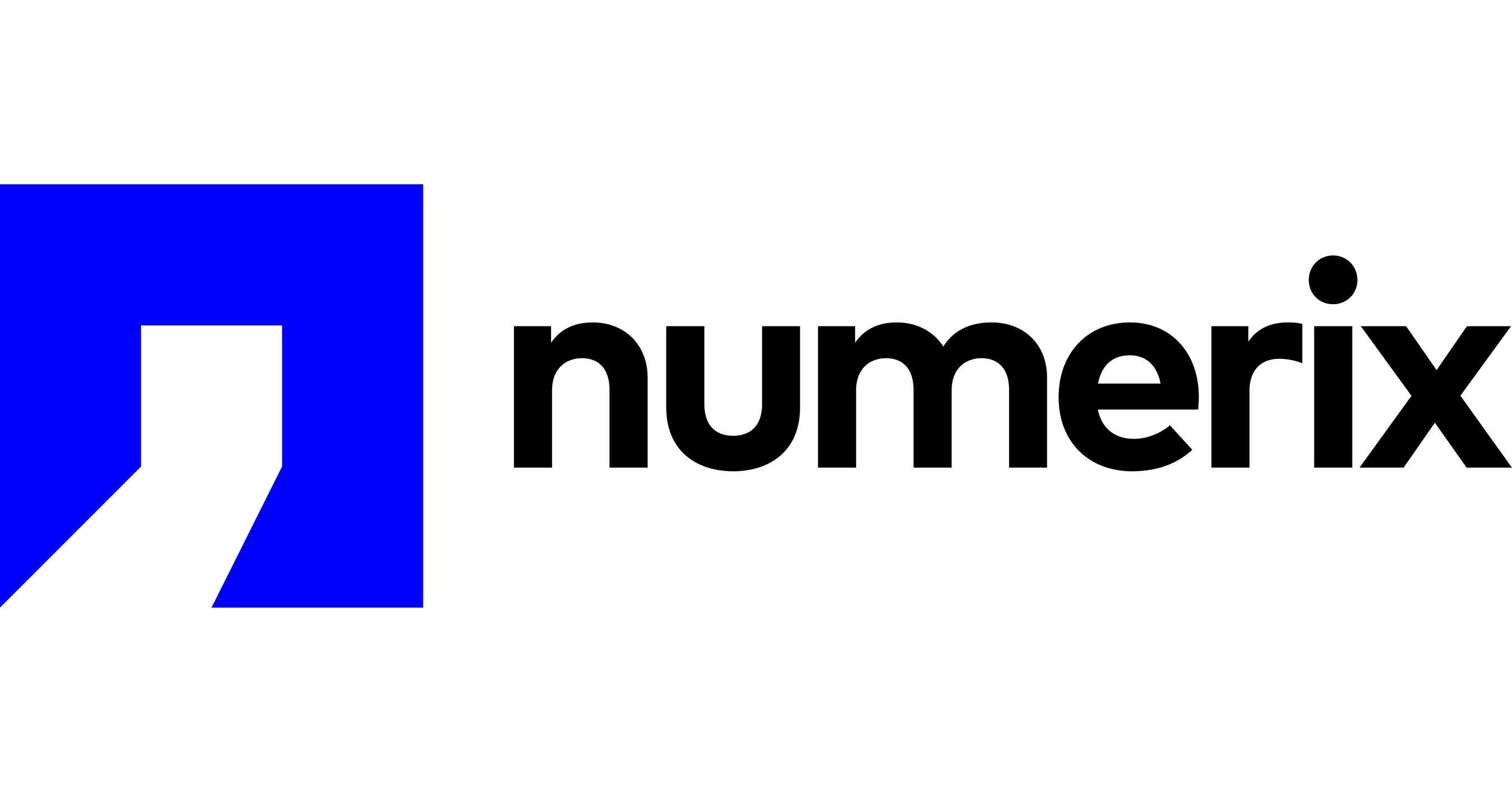
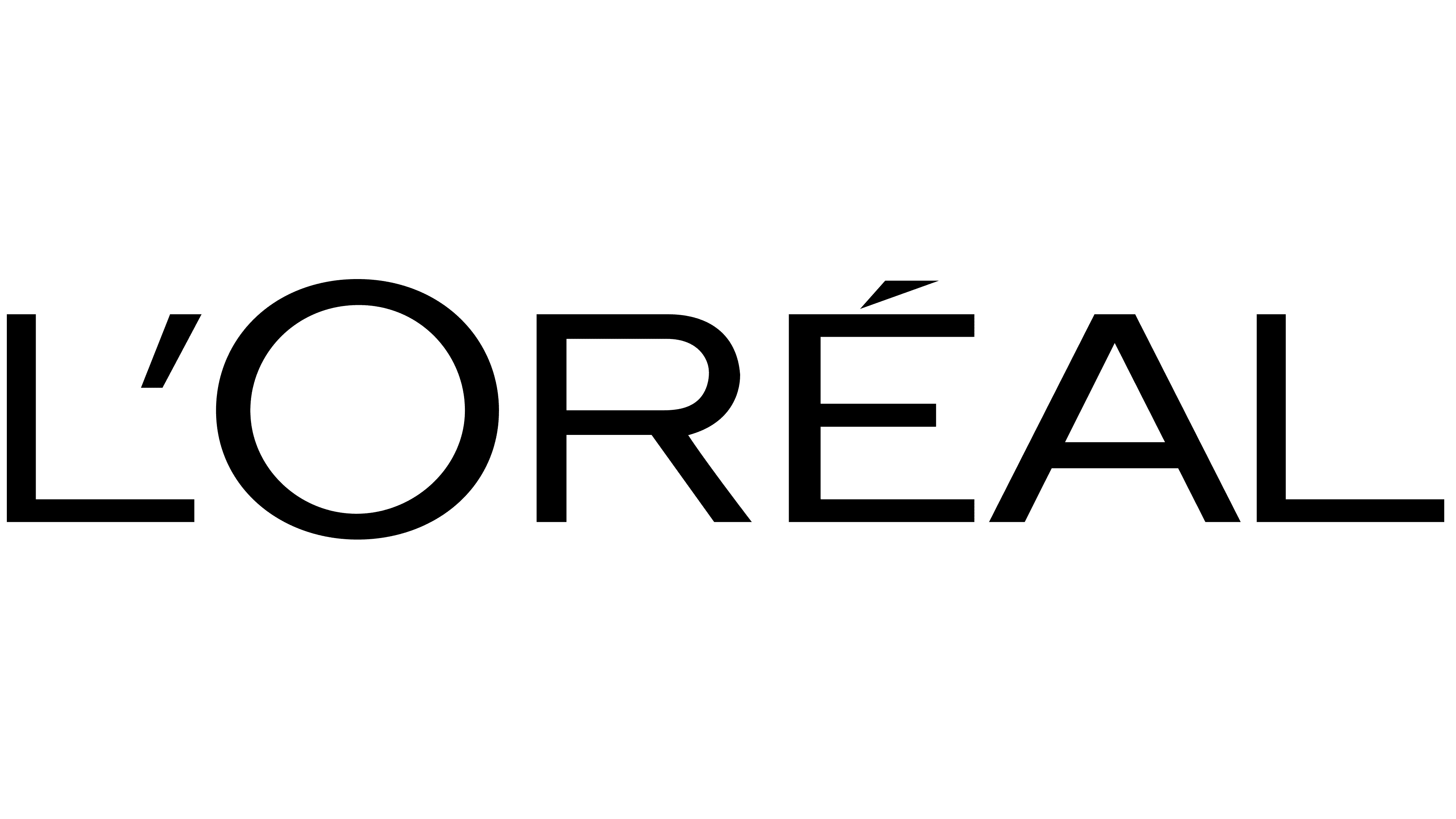











Instinctive, Empowering, Adventurous
Illuminating, Transforming, Elevating
The Wild & Wise Difference
With over 20 years of global corporate experience in business, marketing and communications across multi-industries, we help MNC leaders, teams, creators, artists leverage their strengths, to build performing teams and grow their business.
Leveraging CliftonStrengths® combined with tailored programmes, we help clients build high-performing teams, enhance leadership capabilities, and foster a culture of growth.
Business Expertise
We understand business performance goals and challenges and leverage that to help elevate leaders, individuals and team performance.
Certified Coaching Expertise
We combine multi-industry experience powered by certified coaching expertise: Certified CliftonStrengths® Coach, ICF ACC Coach, Mental Wellness Coach. ALCP Certified Coach.
Strengths-Based Tailored Programmes
Building upon CliftonStrengths®, we leverage a Strengths-based philosophy and design programmes and coaching sessions to fit your individual or team needs, ensuring the most impactful outcomes.
Insights & Strategies for Growth
Explore expert advice, actionable tips, and inspiring stories to unlock your potential and achieve personal and professional success.

What is a Leadership Mindset? Can Good Leaders Really Be Made?
"Leaders aren't born, they are made. And they are made just like anything else, through hard work" - Vince Lombardi
Broadly, a leadership mindset refers to the way of thinking necessary to be a good leader. For someone to become a good leader, they need to be more than just competent at their work; they must also possess well-rounded thinking and skills.
Why Leadership Mindset Matters
Leadership mindset isn't just important for executives or team leaders. ‘It's something that benefits team members as well. ’
As a leader, a leadership mindset enables you to see your team's weaknesses, strengths, and potential. It allows you to delegate work intelligently, match people to the right tasks, and guide your team toward their goals.
As a team member, a leadership mindset helps you work to your full capacity, understand team dynamics, and motivates you to develop and improve yourself.
Building a leadership mindset within your team isn't about making everyone compete to be a leader. It's about empowering every team member, which elevates performance and strengthens teamwork.
Characteristics of Leadership Mindset
Having a leadership mindset means possessing a set of skills and working methods that not only drive the organisation forward but also value and inspire team members.
The key characteristics of leadership:
1. Self-Awareness
A leadership mindset isn't just about leading team members. It's about understanding your own weaknesses and strengths to perform your leadership role at its best. We can think of self-awareness as looking in a mirror and evaluating yourself in various areas, such as planning, communication, or collaboration with others.
2. Visionary Perspective
A good leader creates a clear vision for the team and helps motivate the team to achieve goals together. Having vision doesn't just mean moving the team forward, which also includes being aware of and prepared to handle problems or changes that may arise.
However, having vision should go hand in hand with solution-oriented problem-solving that focuses on finding effective solutions rather than dwelling on problems.
3. Trust
Trust is a crucial characteristic of a leadership mindset because good leaders create opportunities for team members to work at full capacity. That is, believing in the potential of and trusting team members. When you, as a leader, have trust in your team members and are ready to support them when they need it, team members will also trust you as their leader.
4. Effective Communication
One skill of a good leader is effective communication. We know well that communication is the heart of smooth operations. Effective organisational communication isn't about holding frequent meetings. It's about creating an open space for everyone on the team to have opportunities to talk, update, and exchange ideas. Good organisational communication happens when leaders understand its importance and care about building a strong communication culture.
5. Leading by Example
Another important characteristic of a leadership mindset is understanding your role as a leader to your team members. Leaders set standards that directly impact their followers.
For example, if a leader doesn't care about being on time for meetings, team members might question why they should be on time. Therefore, leading by example is an essential leadership skill.
Leaders must be not just 'good at work,' but fundamentally 'good with people.'
The journey to developing a robust leadership mindset starts with understanding where you are today.
Curious about your leadership style? Take the quiz to discover your leadership strengths: https://www.wildnwise.co/leadership-strengths-quiz

The Gen Z Leadership Gap: Why They’re Skipping Middle Management
Today, nearly 52% of Gen Z professionals are actively avoiding middle management roles, viewing them as "high stress, low reward," according to the London-based talent firm Robert Walters.
Why They’re Saying ‘No’ to the Manager Track
Gen Z is deeply sceptical, and for good reason. They watched previous generations sacrifice everything for the career ladder, only to face burnout, layoffs, and economic uncertainty. Their core objection is clear: Why should I trade my mental health and work-life balance for a manager title that offers neither security nor proportionate compensation? Crucially, it’s not that they dislike leading; they dislike the traditional definition of the manager role: a single person expected to be good at everything while bearing all the risk.
How CliftonStrengths Makes Leadership Worth Aspiring To
This is where a framework like CliftonStrengths steps in. It helps us redesign the leadership role to be sustainable, authentic, and genuinely rewarding, directly addressing Gen Z's concerns.
1. Authentic Leadership Through Self-Awareness
CliftonStrengths gives professionals the language to understand how they naturally think, influence, and build relationships. With 34 natural talent themes, it empowers emerging leaders to have self-awareness and craft a management style that is authentic, not forced. For instance, a young professional strong in Strategy can lead by providing vision, while someone with Empathy can lead by developing team members. This approach allows them to bring their genuine self to the role, which increases satisfaction and dramatically reduces the sense of "friction" that leads to burnout.
Curious about your leadership style, take the quiz https://www.wildnwise.co/leadership-strengths-quiz
2. Less Stress, More Success
The "high stress" complaint often stems from people operating outside their natural talents. When a leader knows and applies their core strengths, they spend time on tasks that energise them rather than drain them. This shift from struggling to thriving directly counters the "high stress, low reward" perception, ensuring leaders achieve more with less personal sacrifice.
3. Distributed Team Leadership
Gen Z values collaboration over hierarchy. Strengths actively promote the idea of shared accountability through complementary partnerships. Instead of one middle manager being expected to handle strategy, coaching, budgets, and conflict resolution single-handedly, strengths data allows responsibilities to be shared across a team based on who has the best talent for the task. This creates a preview of leadership that is collaborative, not crushing.
An Invitation to Evolve
Gen Z's hesitation isn't a problem we just 'manage' away. It's a genuine invitation to evolve what leadership means profoundly. The companies that succeed here won't just rebrand the old manager's job. They will offer genuine structural change: autonomy, meaningful impact, purpose, and a clear demonstration that leadership will enhance, not diminish, their quality of life. By making leadership more personal and sustainable, we can rebuild a talent pipeline that a sceptical, but highly talented, generation is excited to join.
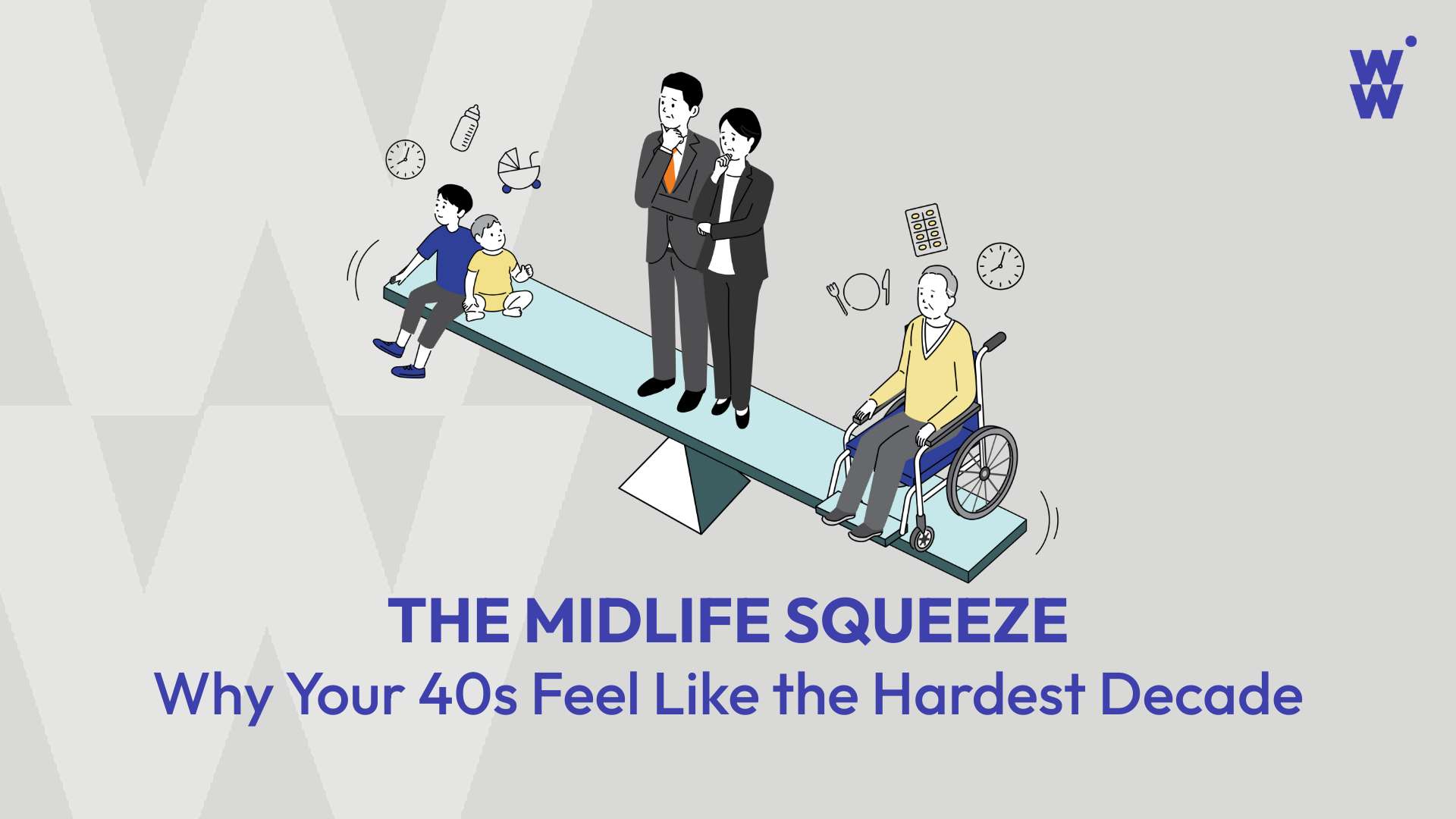
The Midlife Squeeze: Why Your 40s Feel Like the Hardest Decade
For many, the 40s arrive with a unique kind of pressure, a relentless tightening from all directions that often leaves individuals feeling more "squeezed" than at any other point in their lives. The "midlife squeeze" is a phenomenon born from a confluence of escalating responsibilities and diminishing personal bandwidth.
1. The Sandwich Generation: Many individuals in their 40s find themselves simultaneously caring for ageing parents and raising their own children. This "sandwich generation" dynamic creates an immense emotional, financial, and logistical burden. The energy required to navigate doctor's appointments for a parent while also attending school events for a child can be truly exhausting.
2. Career Crossroads & Peak Performance Pressure: Professionally, the 40s are often a time of peak performance pressure. There's an expectation to be at the top of your game, leading teams, hitting ambitious targets, and continuously demonstrating growth. Simultaneously, the awareness of career plateaus or the desire for a significant change can spark intense self-reflection and anxiety about the future.
3. Financial Strain: Juggling mortgages, college savings, retirement planning, and potential healthcare costs for both generations can create significant financial stress. The weight of these monetary responsibilities often feels heaviest in this decade.
4. Identity Shifts & Existential Questions: Beyond the external pressures, the 40s also bring a profound period of internal re-evaluation. The dreams of youth are confronted with the realities of life, leading to questions about purpose, legacy, and personal fulfilment. It's a time when many individuals confront their own mortality and the limitations of time, prompting a desire to live more authentically or make significant changes.
5. Physical Changes & Health Concerns: The body often starts sending different signals in the 40s. Metabolism slows, aches and pains become more common, and health concerns that felt abstract in earlier decades can become very real. This can impact energy levels, self-esteem, and overall outlook.
It’s no wonder, then, that many describe their 40s as a relentless treadmill, constantly striving to keep all the plates spinning without dropping any.
Leaning into Your Strengths for a Better 40s
In the midst of this overwhelming decade, understanding your CliftonStrengths (StrengthsFinder) can be a powerful tool for navigating the pressures, minimising burnout, and finding renewed purpose. CliftonStrengths identifies your unique talents, grouping them into 34 themes, and helps you understand how you naturally think, feel, and behave. When you lean into your strengths, tasks become less draining, and you find more joy and efficiency in your efforts.
The 40s will always be a challenging decade due to the inherent demands. However, by understanding and intentionally applying your CliftonStrengths, you can transform the experience from one of constant struggle to one of empowered navigation.
- Identify Your Top 5: If you haven't already, take the CliftonStrengths assessment to pinpoint your dominant themes.
- Reflect on the Squeeze: Consider which specific pressures of the 40s are weighing on you most heavily.
- Strategise with Your Strengths: How can you intentionally use your top strengths to address these challenges? For example, if you have a high Arranger, can you use that to better coordinate family schedules? If you have Woo, can you leverage it to build supportive networks?
- Communicate Your Needs: Understanding your strengths also helps you articulate what you need from others. If you thrive on Context, you might need more background information before making big decisions.
- Find Your Energy Sources: When you operate in your strengths, you don't just perform better; you also feel more energised and fulfilled. Prioritise activities that allow you to engage your talents, providing a much-needed antidote to the drain of the squeeze.
The midlife squeeze is real, but it doesn't have to break you. By consciously applying the power of your CliftonStrengths, you can make the critical shift from midlife crisis to midlife pivot. You can not only survive your 40s but truly thrive, turning a decade of pressure into a period of profound growth and purposeful living.
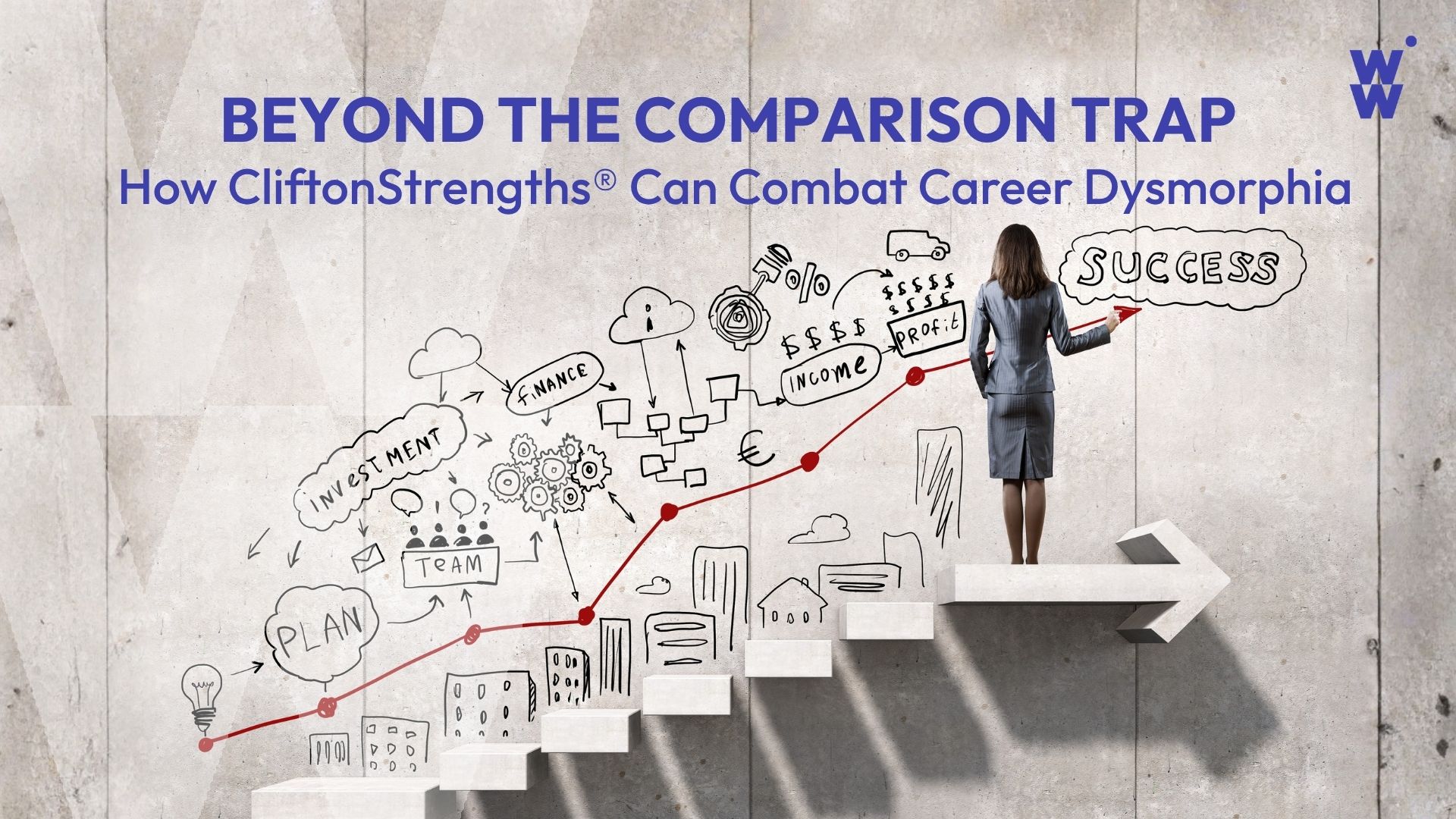
How CliftonStrengths® Can Combat Career Dysmorphia
In the age of hyper-curated online success stories, a silent affliction is taking root: Career Dysmorphia. At its core, it is a cognitive mindset distortion that causes a pervasive feeling of professional inadequacy, making individuals perceive their career progress as flawed, insufficient, or "behind" compared to their peers. Fueled by relentless social comparison and the pressure of "hustle culture," it leads to self-sabotage, minimising real achievements, and a chronic sense of being an imposter. To shift focus from this discouraging comparison game to genuine self-worth, a strengths-based tool like CliftonStrengths® offers a powerful antidote.
The Anatomy of Career Dysmorphia
Career dysmorphia often manifests through several signs:
- Constant Comparison: You frequently check LinkedIn or social media, feeling an immediate pang of failure when reading about a peer's new title, award, or venture.
- Minimising Success: You dismiss your promotions, raises, or successful projects as "luck" or "not a big deal."
- Stagnation Anxiety: You feel your career is stalled, even when you have made measurable progress.
- Imposter Phenomenon: You fear being "found out" as a fraud, despite holding a respectable position.
This mindset is exhausting and ultimately limits potential. It encourages individuals to chase other people's definitions of success, often leading them down career paths that feel inauthentic or draining.
The CliftonStrengths® Antidote: Redefining "Success" Internally
The core premise of CliftonStrengths® is that you are most effective, engaged, and fulfilled when you invest in what you naturally do best, your DNA talents. It identifies your unique patterns of thinking, feeling, and behaving and categorises them into 34 distinct themes, providing a personalised map of your potential.
Here is how focusing on your top CliftonStrengths® themes can help dismantle the mental traps of career dysmorphia:
1. Shifts Focus from Flaw to Flow
Career dysmorphia forces you to focus on perceived weaknesses—the skills you don't have or the achievements you haven't matched. CliftonStrengths® flips the script. By articulating your Top 5 (or 34) themes, the assessment gives you a positive, unique, and actionable vocabulary for your innate capabilities.
- Example: Instead of feeling shame because you aren't an aggressive Achiever like a colleague (dysmorphia), you realise you have high Relator and Empathy. This reframe shows your success lies in building deep, trust-based client relationships and fostering a supportive team environment—a vital form of professional value.
2. Provides a Personalised Benchmark for Progress
Comparison is destructive because it uses an external, universal standard of success that ignores individuality. CliftonStrengths® helps you establish an internal standard of success.
- Impact: Knowing your strengths helps you ask, "Am I using my Input theme to continuously learn and share valuable knowledge?" or "Am I leveraging my Woo (Winning Others Over) to build new networks?" When your daily work aligns with your natural talents, you experience moments of "flow," which become a tangible, internally validated measure of a successful day, regardless of external titles or bonuses.
3. Transforms "How" You Work, Not Just "What"
CliftonStrengths® does not dictate a single career path, but rather the manner in which you approach any role. This is crucial for career dysmorphia, as often the struggle isn't the job itself, but the feeling that you are forced to work against your nature.
- Application: If a job requires high-level planning, someone with high Maximiser might focus on perfecting the best possible plan, while someone with high Activator might focus on getting the plan launched quickly and making improvements along the way. Both succeed, but they succeed authentically. Understanding this "how" allows you to stop trying to emulate a colleague and instead find your most efficient, enjoyable, and sustainable path to success.
Moving Forward: From Comparison to Contribution
To leverage CliftonStrengths® against career dysmorphia, take these steps:
- Know Your Talents: Take the assessment and deeply study your reports. Recognise the power in your unique combination of themes.
- Name Your Contributions: Use the language of your strengths to articulate your value in performance reviews, interviews, and internal team meetings. This helps solidify your internal belief in your professional worth.
- Find Your "Best Day": Intentionally seek out tasks, projects, and environments where you can actively employ your top strengths. When you feel a sense of ease, excellence, and enjoyment, you are operating from your strengths—this is the real measure of success.
By prioritising an authentic, strengths-based approach, you replace the destructive mirror of comparison with a lens of clarity and purpose. Career dysmorphia thrives on external metrics; your strengths thrive on internal truth. By committing to the latter, you can finally move beyond feeling perpetually "behind" and embrace the powerful professional you already are.

The Future-Proof Middle Manager
For years, the future of middle management has been in question. But while some have speculated about its end, the numbers tell a different story. Since 1983, the proportion of middle managers has actually grown, now making up 13% of the U.S. labour force. Yet, the warnings persist. With AI poised to automate many tasks, and reports of managerial roles being cut, it’s worth asking: what does it take to be an effective middle manager today and in the future?
The answer lies in a fundamental shift in the role itself. The modern middle manager serves as a vital bridge between frontline workers and senior leadership. They have direct access to customer insights and are uniquely positioned to translate those needs up the chain of command. Furthermore, they are becoming essential coaches and mentors, helping employees adapt to new technologies and responsibilities. They motivate teams to learn new skills and even guide them in interpreting and working with AI. This new role moves beyond simple oversight to facilitation and capability-building, transforming managers into agents of change.
Essential Skills for the Modern Manager
To succeed in this new landscape, managers must cultivate a diverse set of skills. According to the Indeed Career Guide, core skills include communication, problem-solving, and leadership. However, as technology becomes more integrated, soft skills like empathy, emotional intelligence, and creativity are becoming increasingly critical to their success. These are the skills that prevent the workplace from becoming a "cyberised" environment and allow managers to act as stewards of their teams' well-being.
A New Approach to Development
Developing these skills requires a deliberate approach from both the individual and the organisation. A framework like CliftonStrengths® can be used to help managers understand their innate talents, such as analytical thinking or relationship building. By identifying and leveraging their personal strengths, managers can enhance their leadership effectiveness and tailor their approach to communication and team development. This method also helps improve team dynamics and creates a shared language for talent within the organisation.
The Need for Upskilling and Re-evaluating
In addition to soft skills, managers must pursue technical upskilling to stay ahead of automation. As AI takes on lower-level problem-solving, managers must focus on higher-order challenges, developing the analytical and strategic skills that complement technology rather than being replaced by it.
Ultimately, companies that want to build a resilient and agile organisation must change how they select and evaluate managers. Rewarding top salespeople with managerial roles, for instance, without assessing their ability to mentor and coordinate, is a mistake. Managerial success must be measured by a manager's contributions to coaching, mentoring, and cross-functional collaboration. By investing in and properly valuing their middle managers, organisations will not only survive but thrive in an era of rapid change.
Curious about your leadership style, take the quiz https://www.wildnwise.co/leadership-strengths-quiz

Upgrade Your Personal Operating System
We're constantly told to "reinvent" ourselves, but what does that really mean? It sounds like a massive, overwhelming task. Instead of a complete overhaul, what if you thought about it like upgrading your personal operating system (OS)?
Just like the software on your phone or computer, you have a personal OS, a set of core beliefs, habits, and values that shape how you navigate the world. For many of us, this is the "out-of-the-box" system we've used since we were young, shaped by our upbringing, friends, and early experiences. It's a default setting, but it might not be the most effective for where you want to go.
Why an Upgrade is Essential
In the fast-paced world of the future of work, where careers and identities are constantly evolving, relying on an outdated OS can hold you back. An upgrade isn't just about learning new skills; it's about making a deliberate choice to examine and improve how you manage your time, attention, and energy.
Think about a prodigy athlete or a musician. They don't just hope for success; they develop a personal OS built on discipline, consistent practice, and a focus on their goals. This system allows them to be deliberate about how they use their resources to achieve what they want. You can do the same.
What to Look at When Upgrading
So, what are the fundamentals of a personal OS upgrade? It's about taking a good look at your current system and identifying what's working and what's not.
- Your Beliefs: Your operating system is built on your beliefs. Do you believe you're not a good leader? Do you believe you're too old to change careers? These stories you tell yourself can be limiting. The first step is to recognise them and decide if they're still serving you. An upgrade starts with changing the narrative in your head.
- Your Strengths: Your personal OS is also shaped by your innate strengths, the things that give you energy and allow you to thrive. Understanding your natural talents helps you work with, not against, your core self. An effective OS allows you to lean into these strengths and recognise when you need to adapt.
- Your Habits and Routines: The daily rituals you follow are the software applications of your OS. Are they helping you achieve your goals, or are they draining your energy? Simple changes, like prioritising sleep or dedicating time to focused work, can have a domino effect on your overall system.
The Goal of Upgrading
The goal isn't to become a different person, but to become a more authentic and effective version of yourself. Upgrading your personal OS is an ongoing process of self-awareness. It's about knowing your limits, understanding what gives you energy, and making purposeful choices.
The best leaders in the world aren't living two separate lives—one for work and one for home. They have one authentic OS built on consistent values. While the reality is that businesses move quickly, and you have to adapt, having a strong personal foundation makes you more resilient and able to navigate change with purpose, rather than just reacting to it.
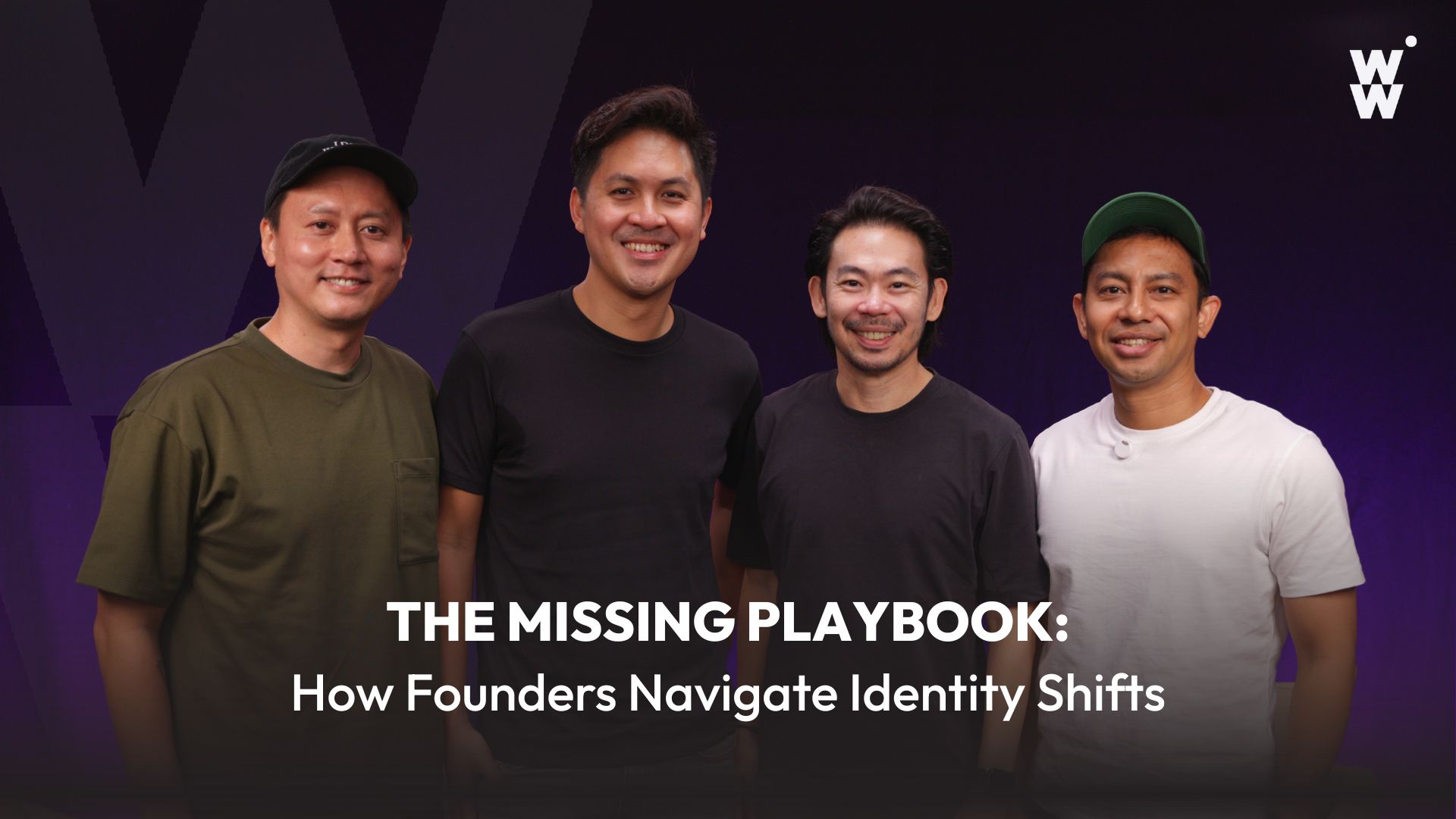
The Missing Playbook: How Founders Navigate Identity Shifts
When Derek stepped down from ViddSee after nearly a decade, people kept asking: "What's next?" He couldn't answer. Not because he lacked ideas, but because he didn't know who he was without the company that had consumed his identity.
"It didn't even feel like just a work identity," Derek told the podcast hosts. "It was a very personal identity that became work. And to be stripped away from that, I was like, Who am I really?"
The Identity Fusion Problem
Derek's story reveals why typical career transition advice fails founders. This wasn't losing a job—it was losing an extension of himself. For years, people had said, "Derek is ViddSee, ViddSee is Derek."
When well-meaning friends advised, "your work is not your identity," Derek found it impossible to accept. "It wasn't work," he explains. "It was my existence there. What I built."
This fusion between founder and company creates unique grief when separation occurs. Unlike other professionals, founders aren't just leaving a role; they're severing from their vision, values, and years of emotional investment.
What Founders Actually Grieve
Derek's experience illuminates the multiple layers of loss:
Loss of Purpose: VidSee represented Derek's mission to empower Asian storytellers. Losing that vehicle meant losing his primary source of meaning.
Loss of Identity: Being known as "ViddSee's founder" shaped how Derek saw himself and how others saw him.
Loss of Structure: The consuming daily rhythm of running a company suddenly vanished, leaving him unmoored.
Loss of Community: Teams, investors, and industry peers formed his primary social network.
Loss of Future Vision: His imagined trajectory—for himself and the company—required complete rebuilding.
Why "Getting Over It" Doesn't Work
Derek initially gave himself a deadline to sort everything out by year's end. When December arrived without resolution, his frustration compounded the sense of being lost.
The breakthrough came when he stopped managing his grief and started feeling it fully. "If you're sad, feel sad. If you're angry, feel angry," he reflects. "Why are we suppressing what we're supposed to feel?"
This meant waking up at 3 AM with anxiety, writing in caps lock when frustrated, and sitting with the full weight of loss. Rather than pathologising these responses, Derek began understanding them as necessary.
The Turning Point
Derek's perspective shifted after watching a simple YouTube video with the message "everything ends." This basic truth helped him contextualise his experience within natural cycles rather than personal failure.
"As much as the founder, building and building and building, you cannot have things end," he explains. "You got stakeholders, you got investors—you can't have things end. So I was never in that psyche or that language."
Rebuilding, Not Rejecting
Friends suggested Derek "throw away" his past and start fresh, but the healthier path involved integration. "There were people around me that were like, no, don't throw away, you rebuild. You stack on top."
This reframe helped Derek see VidSee as one vehicle for deeper values that predated the company and would continue beyond it. His current venture, BE (The Be Company), represents evolution rather than departure—still empowering creators but with expanded scope.
What Actually Helps
Derek's journey reveals what founders need during transition:
Permission to Feel: Explicit support to sit with difficult emotions without timeline pressure.
Protected Time: Derek describes his "adult gap year" as essential for reflection without productivity demands.
Story Sharing: Talking with strangers about his experience helped Derek realise he wasn't alone.
Community: Connecting with others navigating similar transitions provided validation and practical advice.
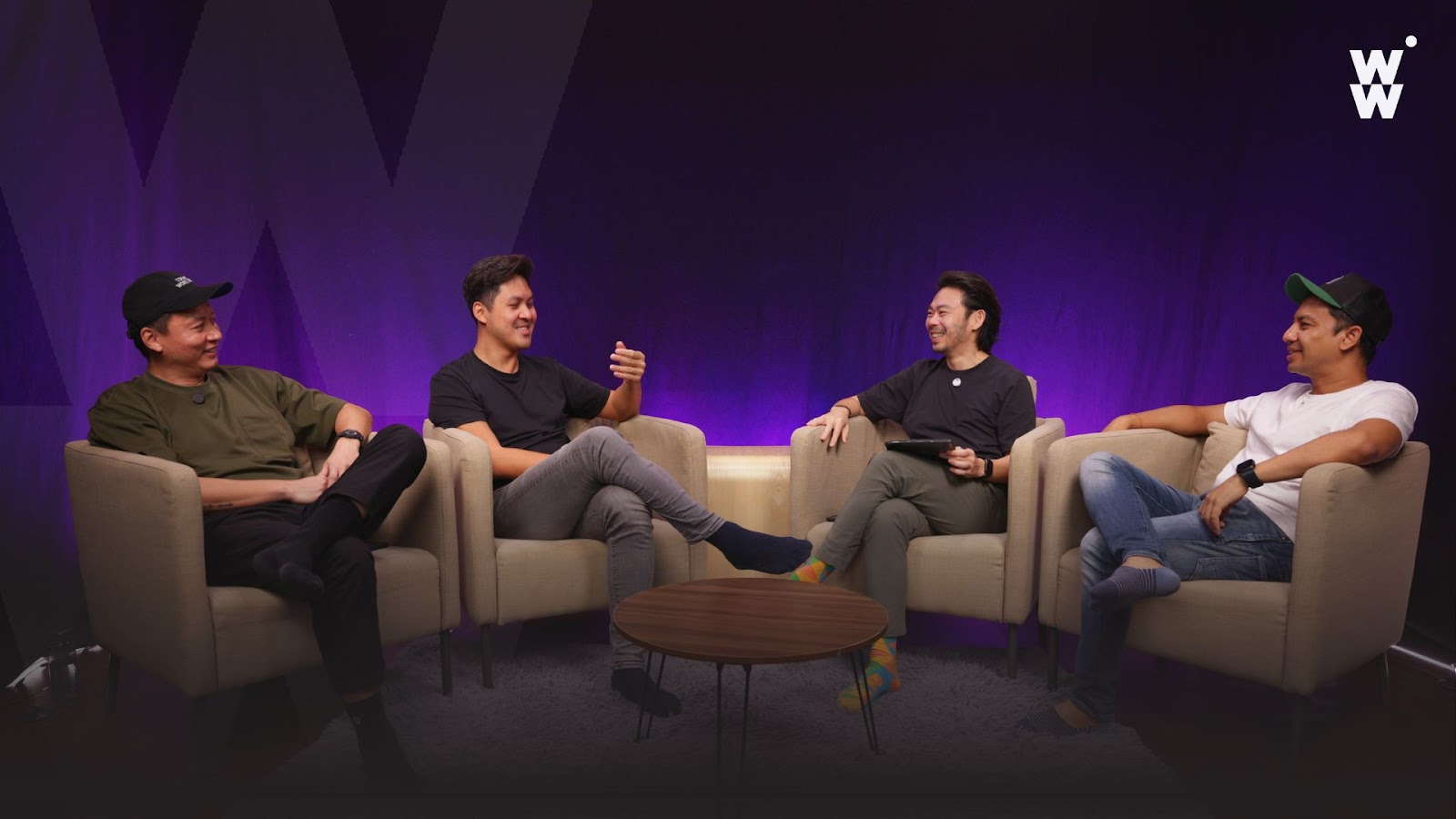
The Hidden Gift
Derek's grief forced examination of patterns he'd ignored during company building—overwork, neglected relationships, leadership blind spots. "If I were to work on myself better, then maybe it could affect how I show up in relationships with co-founders," he reflects.
This self-examination became the foundation for more sustainable approaches in his next venture.
Redefining Success
Rather than measuring how quickly founders bounce back, we might consider:
- Depth of self-understanding
- Quality of rebuilt relationships
- Development of sustainable practices
- Integration of learning into future work
By these measures, Derek's year-long process wasn't delayed—it was a thorough preparation for better leadership.
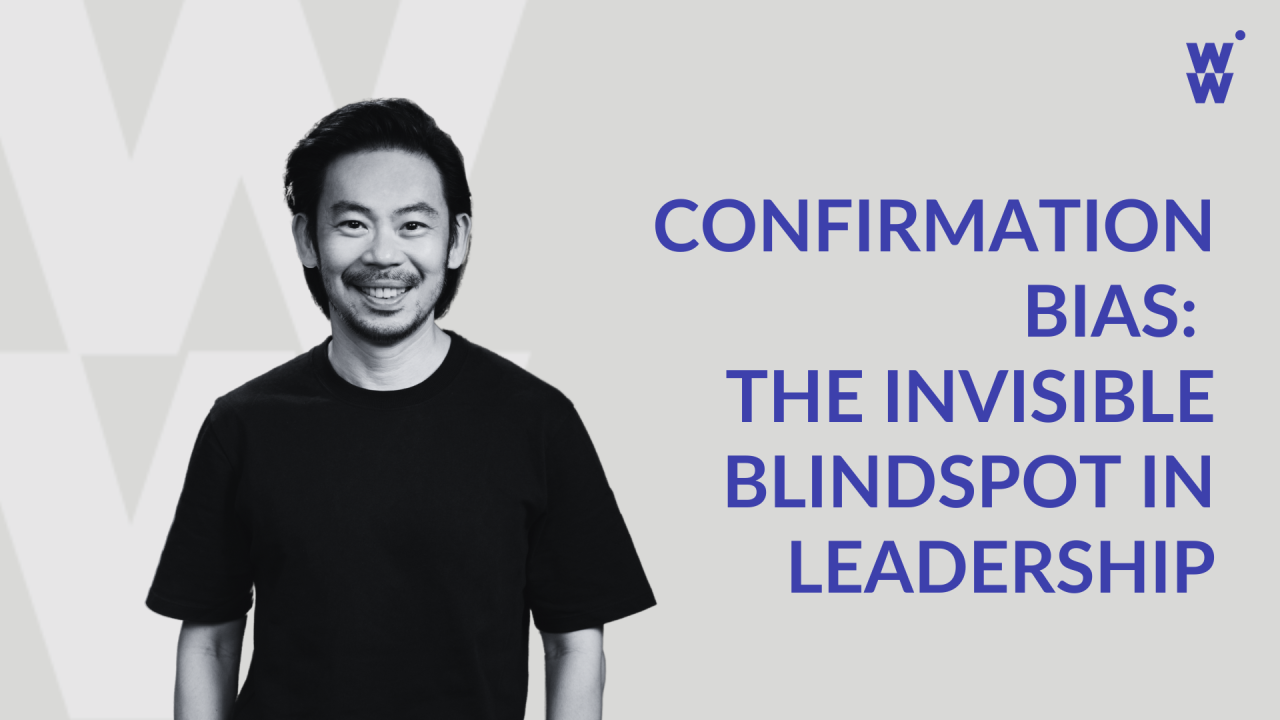
Confirmation Bias: The Invisible Blindspot in Leadership
I've just started my second degree. A Bachelors Degree in Psychology (Organisational Psych). Part time of course. And as I embark on this fun new chapter, re-inventing my new way of life - family, life, fitness, work, I've also decided to take what I learn in uni and apply it to my workshops, strategies, clients and work.
Here's a take on Confirmation Bias. I've seen it at work in the office. I've seen this at work in my own reflections. Let's get into it a little more, from the lens of leadership.
Ever you ever noticed how some leaders only listen to those who agree with them? Or dismiss ideas that challenge their assumptions?
That’s confirmation bias at work.
Confirmation bias is our tendency to favour information that confirms what we already believe and to ignore or downplay anything that contradicts it. It’s human. It’s subconscious.
And for leaders, it can be dangerous.
What does this look like at work?
Here are a few real-world examples:
- Hiring decisions
- Innovation blind spots
- Performance reviews
Why leaders need to care:
Leaders, you have the responsibility to shape culture. We are all humans and when confirmation bias goes unchecked, we limit ourselves and also the business.
- Diversity of thought gets stifled
- Innovation slows down
- Trust within teams may erode
What could be the biggest risk in leadership when Confirmation bias is in play?
Unawareness. Most leaders don’t even know they’re doing it.
What can you do?
As I begin my Bachelors in Organisational Psychology, here’s what I’m learning: self-awareness is everything.
Here are a couple of thoughts that could help you as a leader:
- Slow down your decisions. Ask yourself: What might I be missing?
- Encourage dissent. Invite voices that disagree with you.
- Keep a bias-check partner. Someone who’ll challenge your blind spots.
You don't need to know all the answers in leadership. You need to have a vision, a plan and more importantly, you need to be open.
If you found this helpful, follow me for more thoughts as I share what I’m learning on organisational psychology, leadership, and the mindsets that drive better work.
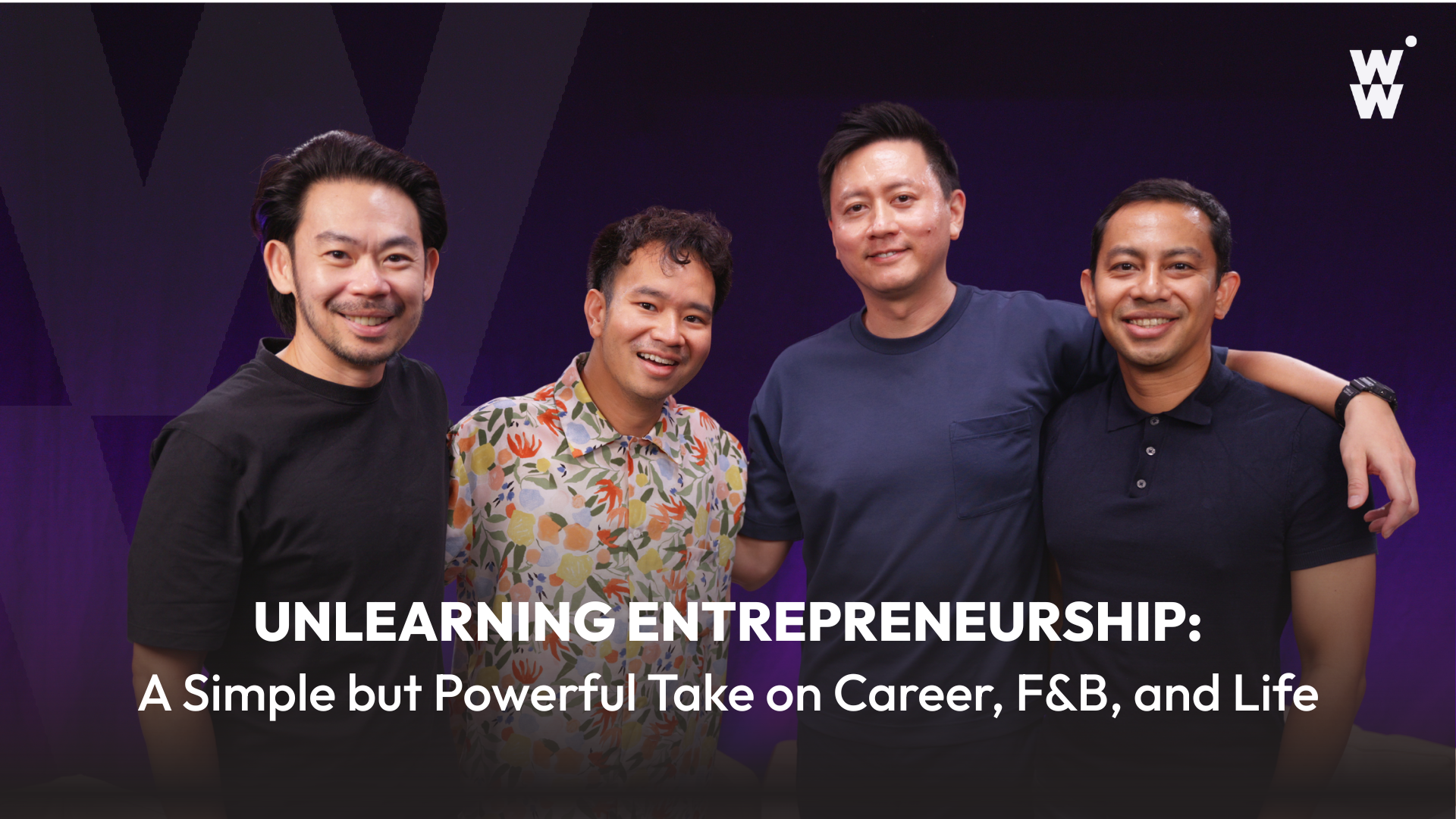
Unlearning Entrepreneurship: A Simple but Powerful Take on Career, F&B, and Life
Why F&B in Singapore Can Be Challenging
For many in the F&B industry, the dream is to find a profitable niche and then scale quickly. But as Chua Ee Chien learned, that strategy can be a fatal mistake, especially in Singapore. He argues that the country's unique market forces businesses to thrive at the extremes—either as a high-end destination for those with money to spare or as a low-cost hawker stall serving the masses. The "middle ground," where you compete with everyone and their mother, is a place where businesses "go to die."
His own experience serves as a cautionary tale. He admits that his business, which started with a single outlet, made the critical error of expanding too quickly, a common tendency in Singapore. This over-eagerness, he believes, is what "killed" the venture. He learned that being "fickle" is a Singaporean trait, and without an effective strategy to combat it, even the most promising concepts can fade away.
The Unsung Heroes of Success: Hard Work & Resilience
"Quiet Quitting," Ee Chien's message is a refreshing reminder of the old-school virtues of hard work and unyielding resilience.
He argues that these are the skills that ultimately allow you to adapt and survive. He recounts facing a 60% increase in cooking oil prices and a 30% jump in a chef’s salary in just six months—insurmountable challenges that demanded more than just a good business plan.
His philosophy challenges the idea that a successful pivot is an act of pure genius. Instead, he believes it is born from the gumption to push through and the wisdom to recognise a new opportunity when it presents itself. He learned that even if you have the intelligence and capital, without resilience, you won't be able to pivot and try new things.
The Maverick's Journey to Finding Joy
Ultimately, Ee Chien’s journey is about more than business; it's about personal growth. It's the story of a man who moved from a "good white-collar job" to a venture he found on a website and then back into the corporate world. His key takeaway is simple: don't do what your mother, father, or society expects of you. Do what you genuinely enjoy.
He reflects on how he learned more in three months at Uber than in two years at a prestigious bank because the work was "super fun" and provided an environment where he was constantly learning. This search for enjoyment and new experiences has defined his journey and continues to guide him as he explores new opportunities in the fast-paced world of AI and Web3.
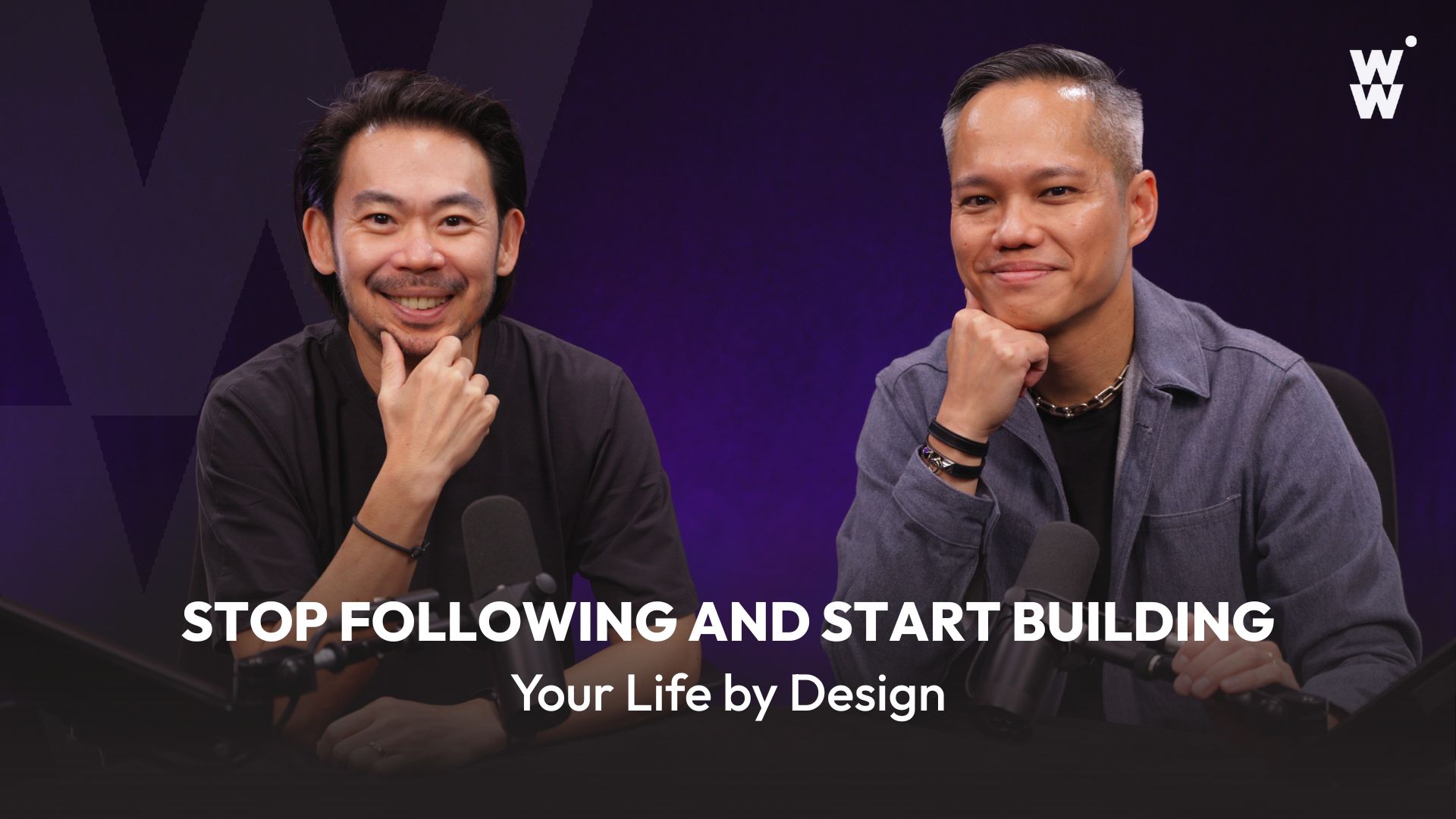
Stop Following and Start Building Your Life by Design
What if you approached your life like a video game designer approaches their craft? You are both the player and the architect, equipped with different skills to develop and systems to master. This is the essence of the "Hunn-verse," a framework for seeing life as an ongoing project of intentional growth and conscious design.
The term "Hunn-verse" comes from thinking of your life as your own personal universe, similar to how you might talk about the "Marvel-verse" or "Star Wars universe." It's your personal world where you decide what matters, what success looks like, and how you want to experience everything.
In your personal universe, you're not just following someone else's script. Most of us inherit our life's structure from external expectations. Our careers become our identities, our possessions define our worth, and our schedules dictate our priorities. But the Hunn-verse suggests a different approach: your life is a collection of systems you can design—relationships, finances, health, creativity, and learning. When your current patterns of thinking create problems instead of solutions, you can consciously choose to rewrite the rules of your personal universe.
The Discipline of Enough
Central to building your personal universe is mastering the concept of "enough." We live surrounded by voices telling us we need more: more income, more space, more experiences, more everything. This creates a perpetual state of reaching for the next thing, only to find that each achievement quickly becomes the new normal.
Your personal universe approach involves intentional experimentation. What happens when you spend a week eating only simple, whole foods? How does it feel to drive the fancy car versus taking public transit? By consciously exploring different experiences, you gather data about what actually contributes to your well-being versus what you've been conditioned to believe you need.
This isn't about deprivation, it's about calibration. When you know your true minimum for happiness, everything above that becomes genuine abundance rather than anxious accumulation. You begin to operate from gratitude rather than scarcity, making decisions from choice rather than compulsion.
Living in High Resolution
Hunn advocates for experiencing life in "4K or 8K resolution" instead of the blurry, distracted 240p that characterises much of modern existence. This means cultivating what Zen practitioners call "beginner's mind"—approaching familiar experiences with fresh curiosity and deep attention.
Consider your next meal not just as fuel, but as a story. Who grew these ingredients? What weather patterns and soil conditions contributed to their flavour? What traditions and techniques went into their preparation? This kind of curious attention transforms routine consumption into a rich, interconnected experience. You begin to see the web of relationships that make your life possible.
Building Your Personal Universe
Your "-verse" isn't a destination, it's an ongoing practice. It's the work of examining your life's systems, questioning inherited assumptions, and making deliberate choices about how you want to exist.
This means regularly asking: Which aspects of my life am I running on autopilot? What would I design differently if I were starting fresh today? How can I create more alignment between my deepest values and my daily actions?
Whether you call it the Hunn-verse, the [Your Name]-verse, or simply "my life by design," the invitation is the same: step back from the life that's happening to you, and begin creating the life you actually want to live in your own personal universe.
The Journey Behind the Philosophy
These insights come from Hunn Wai, a co-founder of Lanzavecchia + Wai design studio, whose own life exemplifies the personal universe approach. Educated both in Singapore and Eindhoven, his journey spans winning product designs and healthcare innovations to digital explorations like NFTs. Most recently, he co-curated Future Impact 3 at Milan Design Week and the Washi Paper, Craft X Tech Project.
As Seen On

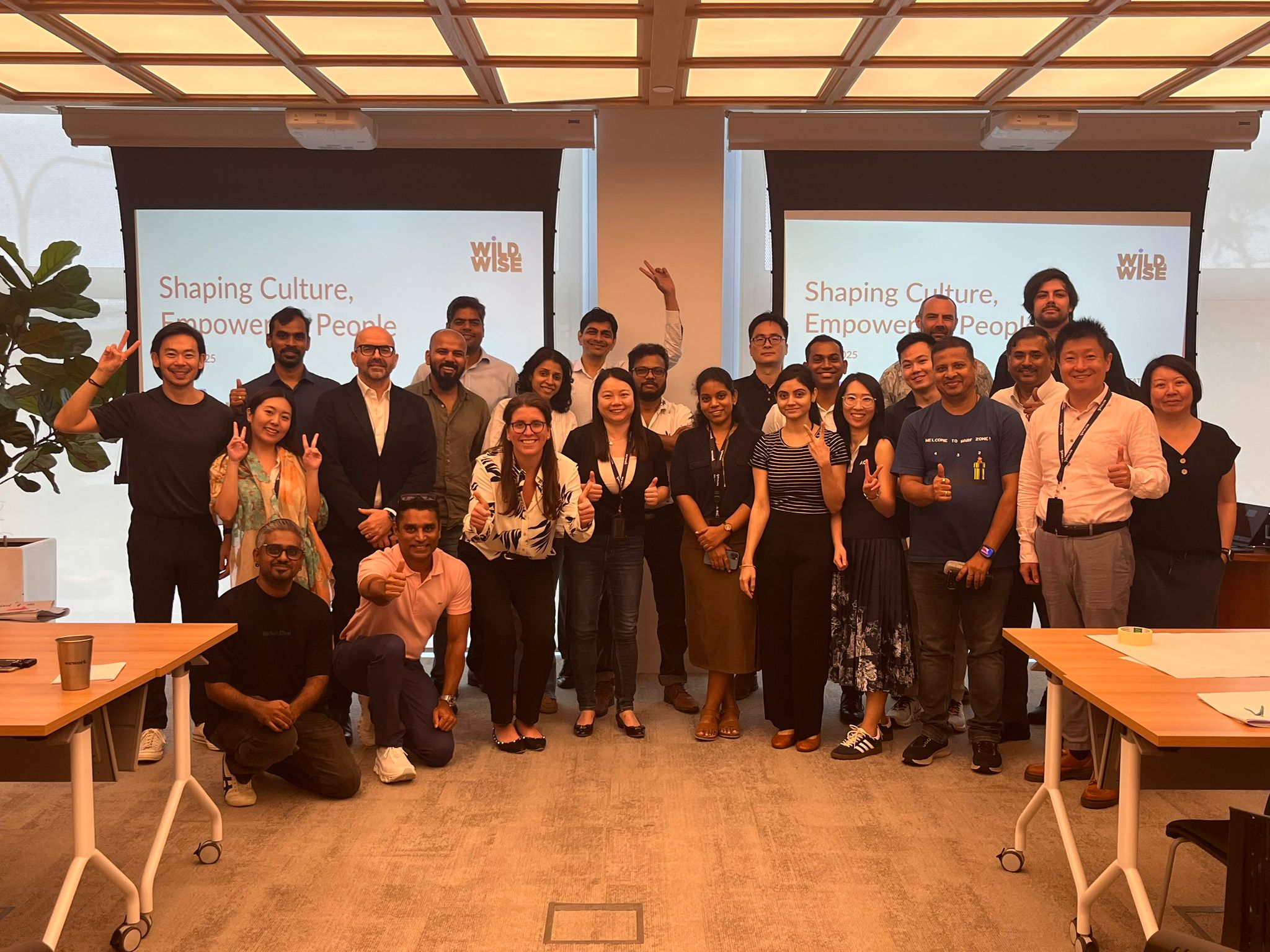
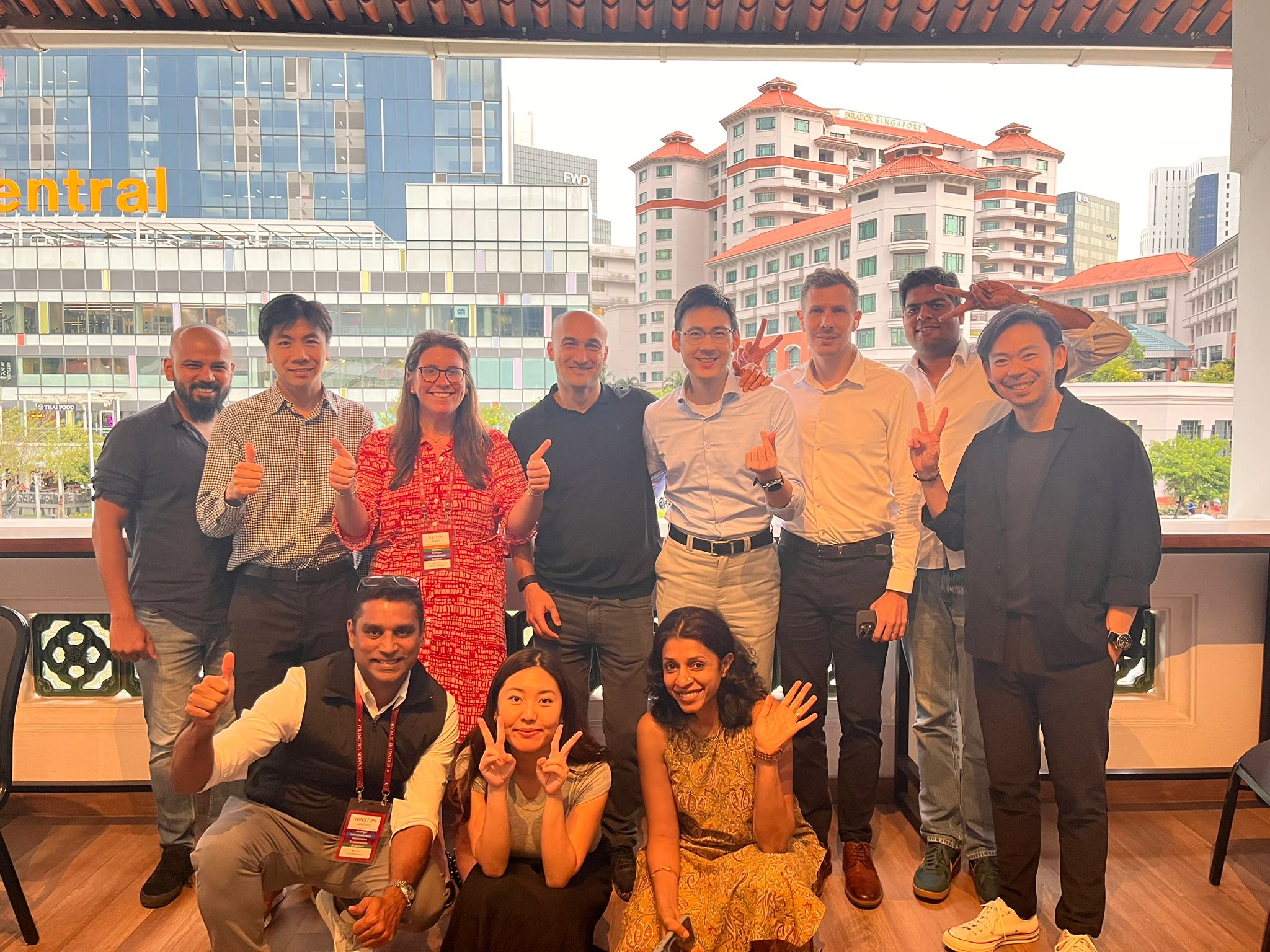
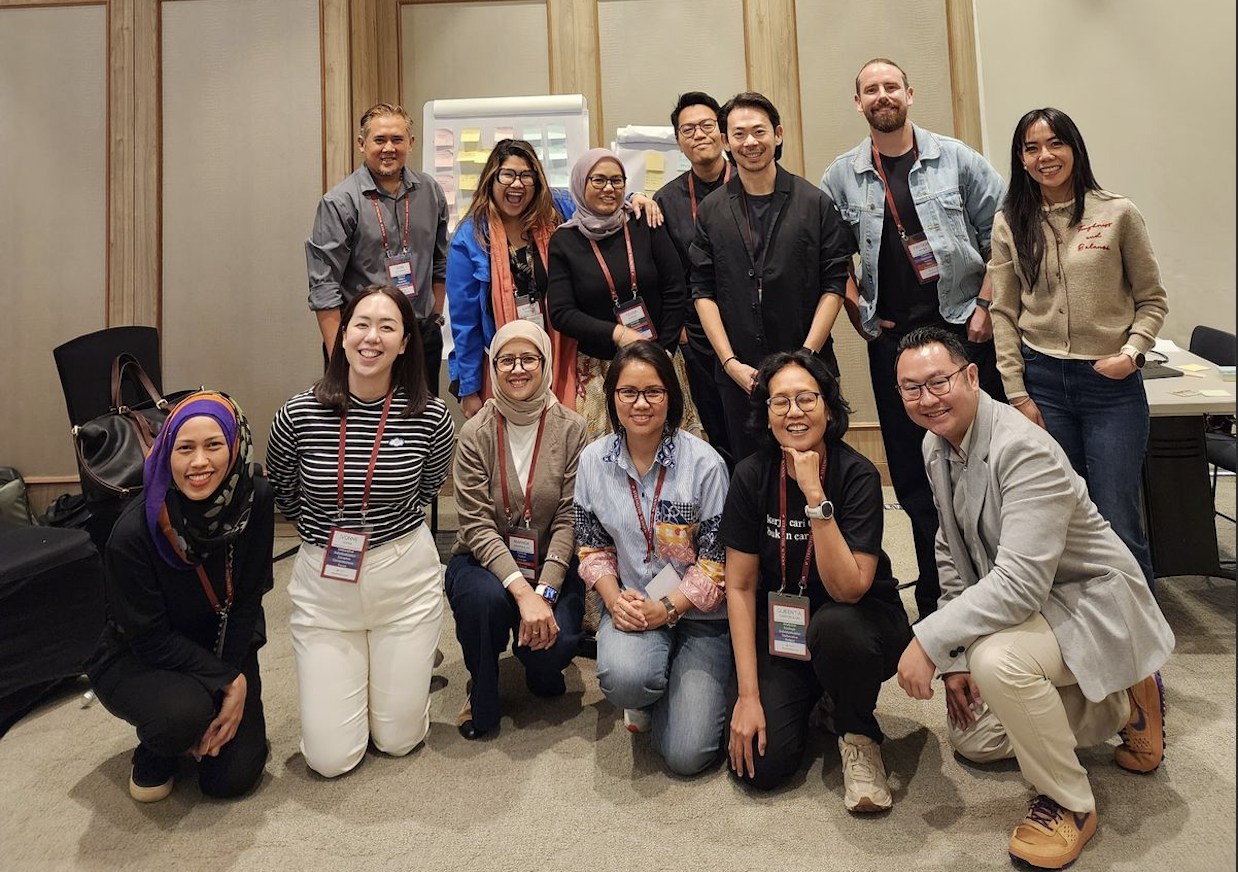
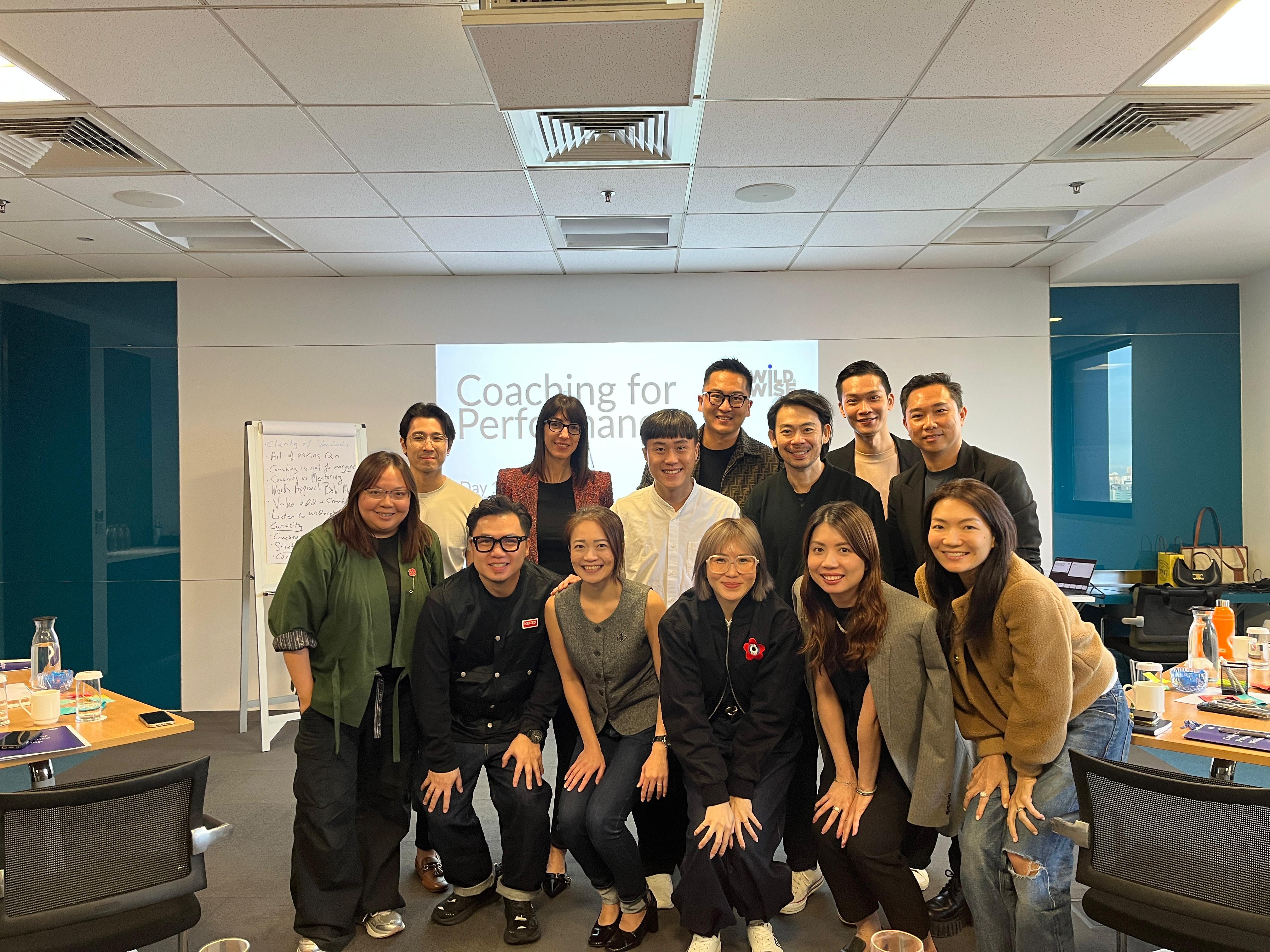
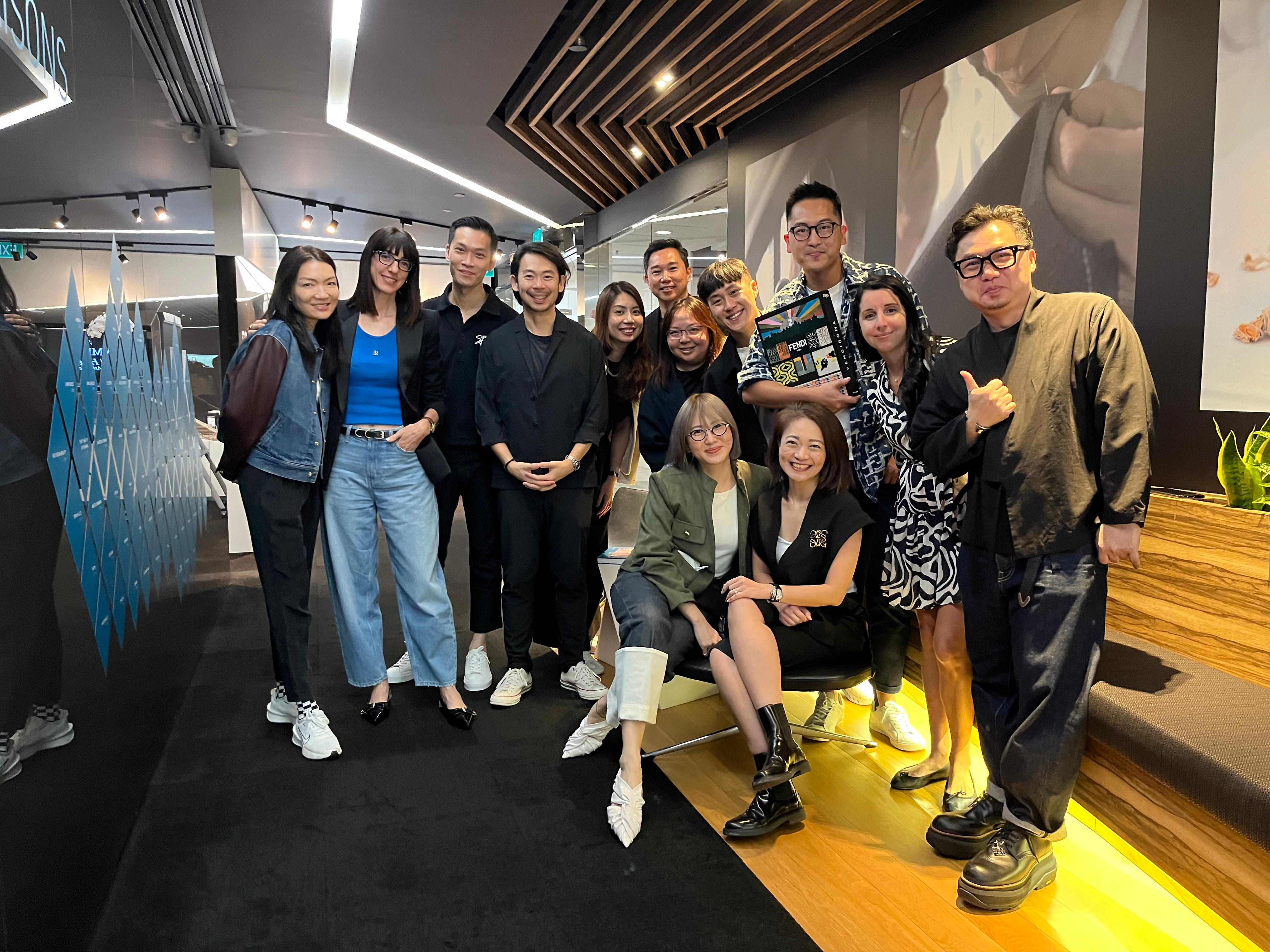
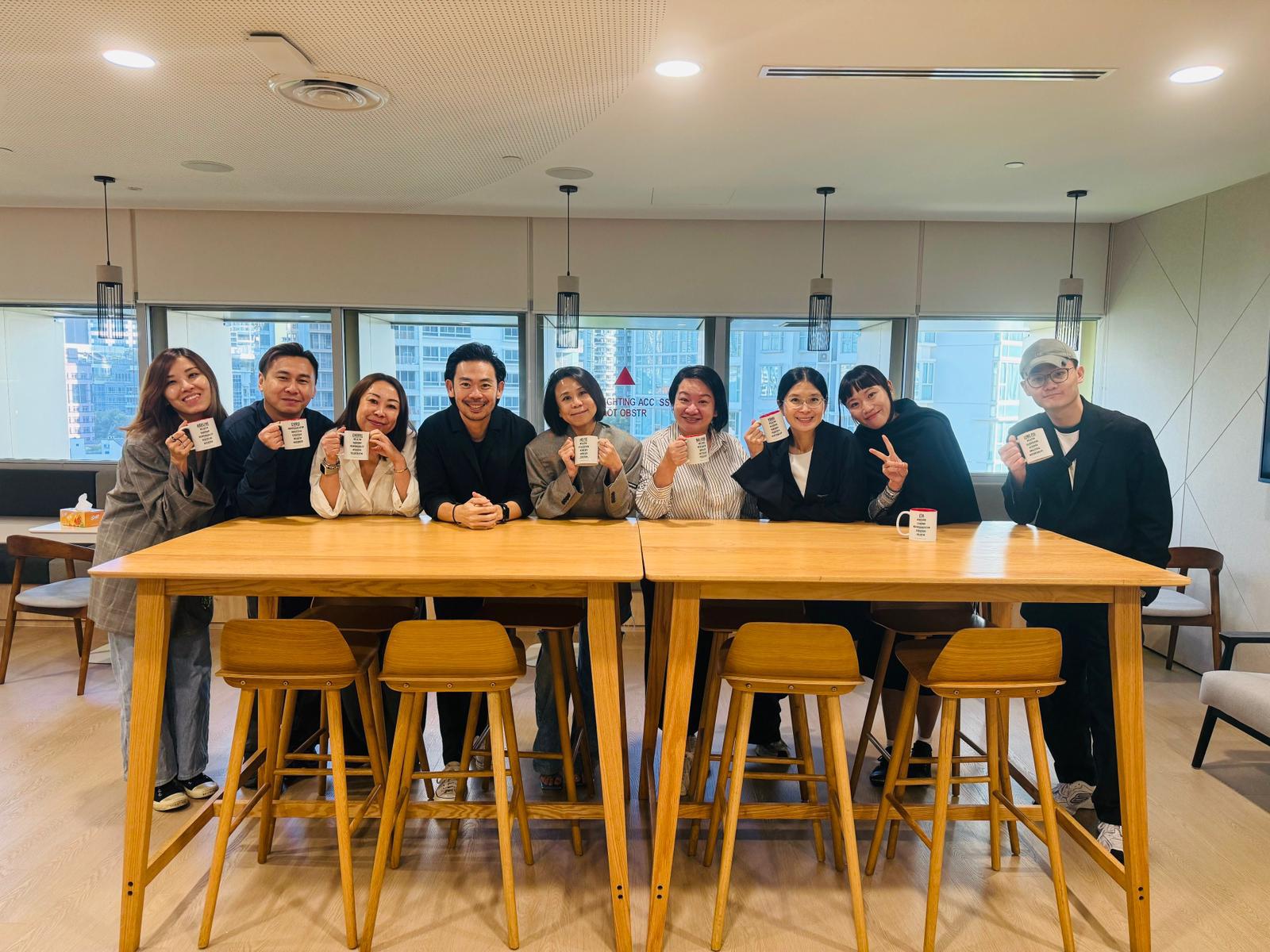

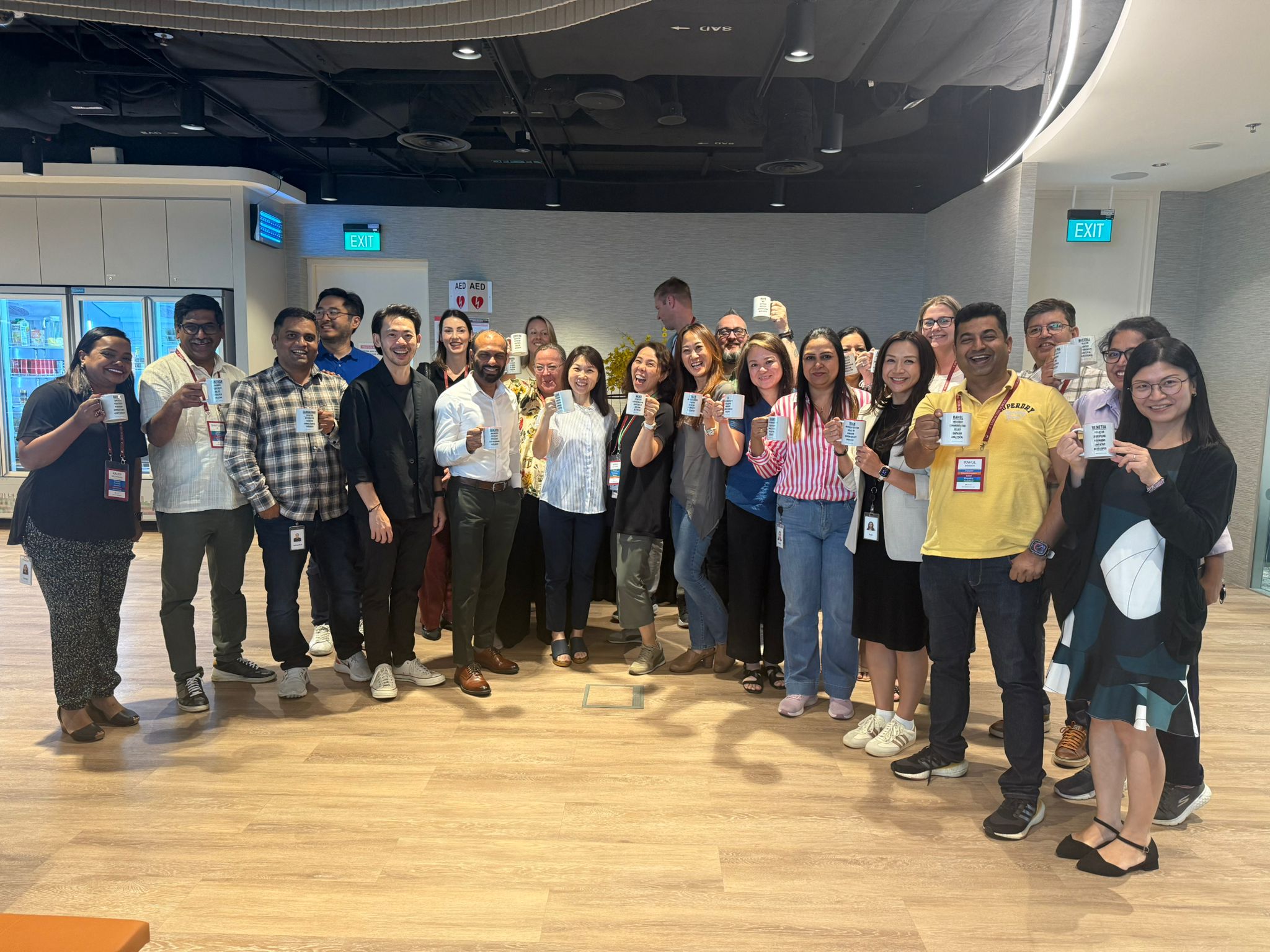

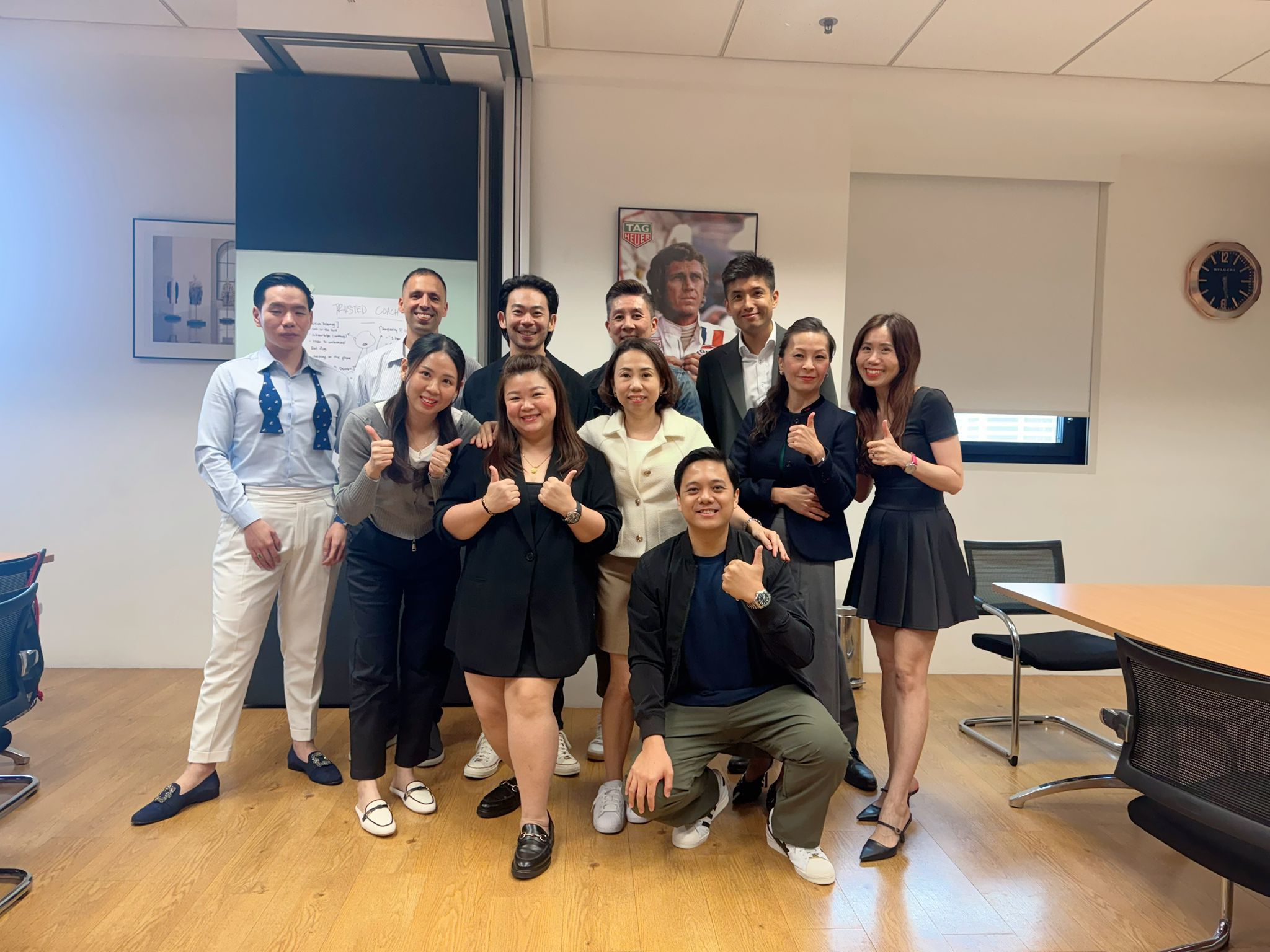












.webp)
.webp)
.webp)

.webp)
.webp)

.webp)
.webp)
.webp)























.webp)
.webp)
.webp)

.webp)
.webp)

.webp)
.webp)
.webp)























.webp)
.webp)
.webp)

.webp)
.webp)

.webp)
.webp)
.webp)























.webp)
.webp)
.webp)

.webp)
.webp)

.webp)
.webp)
.webp)
What Our Clients Say
We’ve helped clients across a variety of industries. Here’s what they have to say about working with Wild & Wise.






Ready to Get Started?
Schedule your session now!


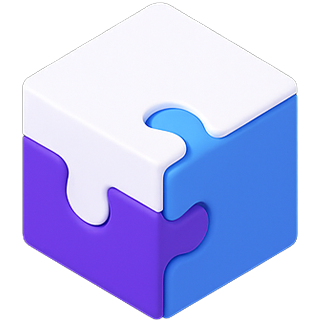









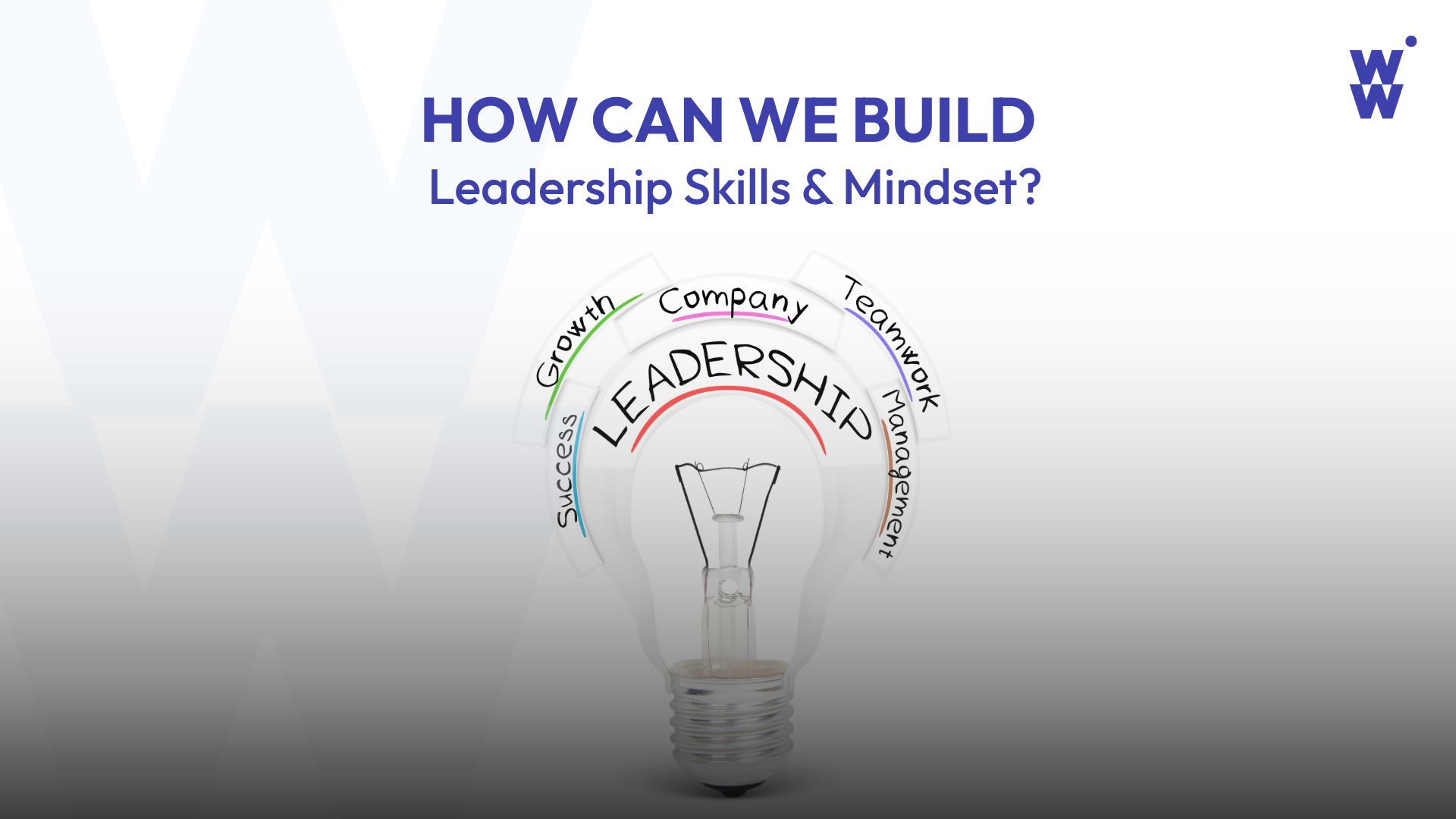
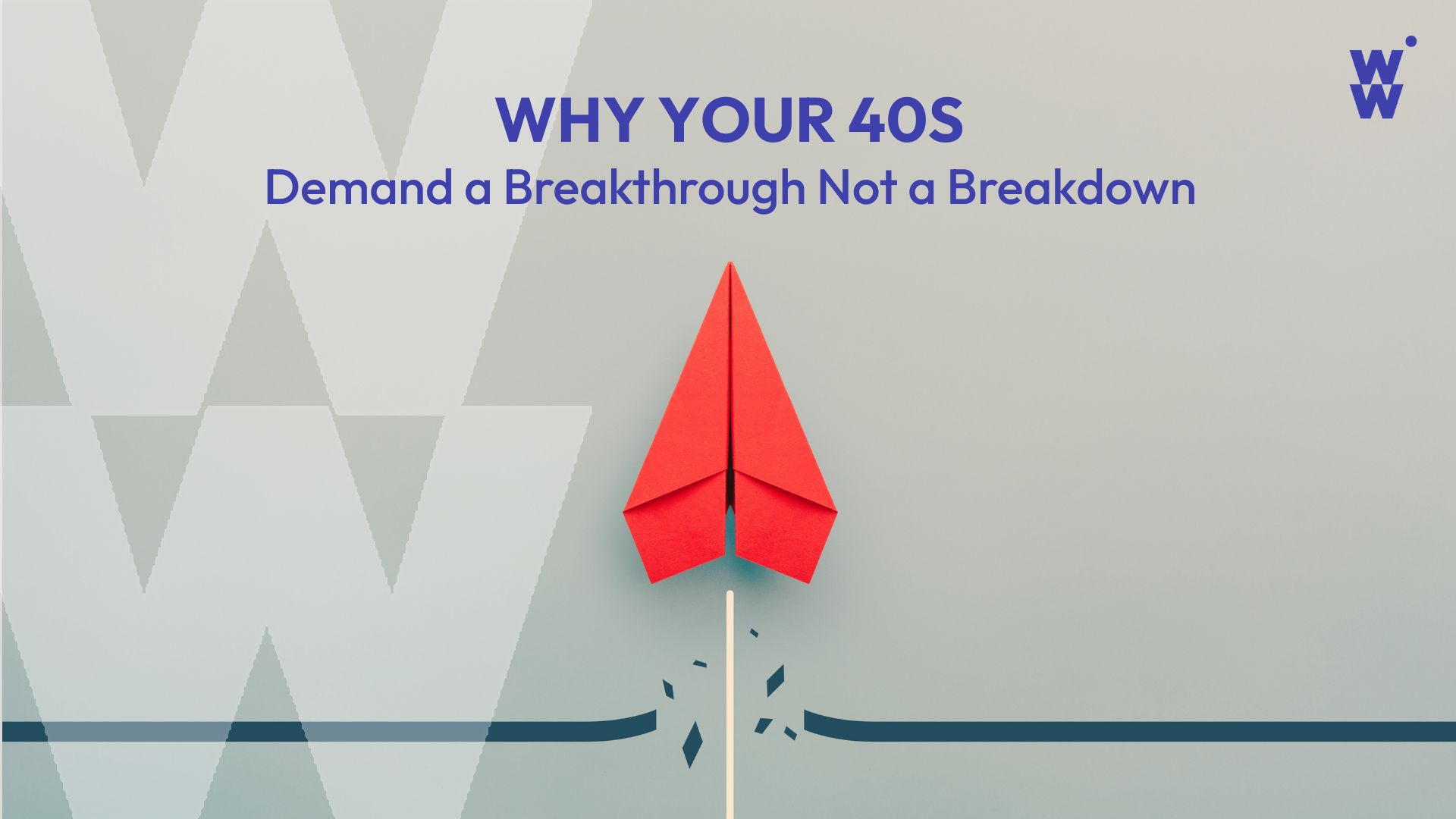



.webp)

.webp)